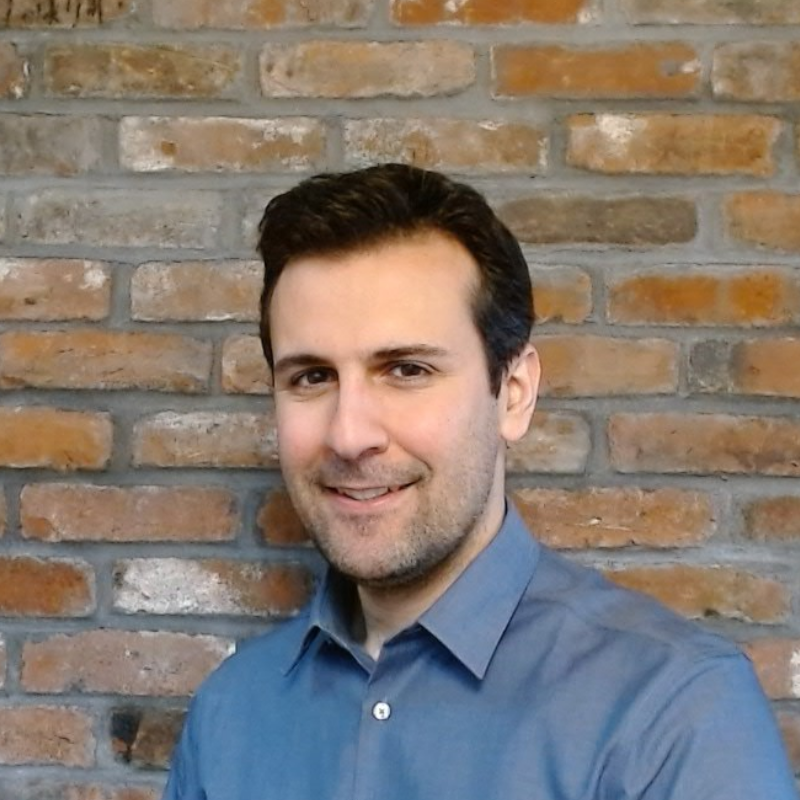Adam Lab


What if we could suspend biological activity in the human brain to protect it after a stroke and reanimate it in safe conditions? Through our research, we have come to believe there are neuroprotective hibernation mechanisms that are dormant in non-hibernators and that we could recruit with anesthesia. With experiments on hibernating and non-hibernating rodents, we are combining pharmacology, neurophysiology, and bioengineering to create artificial hibernation and devise new therapies for surgery and critical care.
Neural networks and plasticity have been used to create far-reaching artificial learning systems. What if we could use metabolic networks and hibernation to create far-reaching artificial adaptive systems? By combining biophysical modeling, engineering methods and in-vivo experiments in rodents, hibernators and non-hibernators, we are deriving systems-theoretic principles from homeostatic mechanisms in neurometabolism and hibernation. With these principles, we can engineer novel biomedical adaptive systems and can elucidate brain function and physiology to improve critical care and mental health.
Brain metabolism is being measured with state-of-the-art systems leveraging nuclear-magnetic-resonance (NMR). But, these systems can be astronomically large and expensive. What if we could revamp NMR in miniature and affordable technology for neuroscience research? We are revisiting the fundamentals of NMR and creating implantable technology that can be deployed in neurometabolism and hibernation paradigms. With this invention, we could open up new research avenues in neurometabolism.
In addition, there are always exciting problems out there that can have substantial scientific, engineering, or clinical impact. We would love to get involved and collaborate if we can help.
We use mathematics from systems theory, optimization methods, and decision making to quantitatively capture brain dynamics and function. We also borrow abstract constructs from analysis, algebra, topology, and geometry to formalize new principles for intelligent systems.
We combine electrophysiology, pharmacology, microscopy, circuit-manipulation techniques, and behavior in rodents to examine brain circuits and function. We also develop new experimental methods that could give us new kinds of data and insight.
We develop biophysical models of brain circuits to explain brain mechanisms. Using model simulations, we explain how drugs, treatments, or disorders alter brain dynamics and function across scales, from a molecular level to a network level.
We develop computational techniques to derive insight from clinical data, to process signals, and to estimate physiological states in real-time. We also engineer technology that can monitor and control brain states and physiology.

Principal Investigator
Member of the Faculty in Anaesthesia
eadam@mgh.harvard.edu
Show Bio Dr. Adam received his PhD from MIT in 2017 as an engineer and a mathematician, studying complex systems using pen-and-paper mathematics. He became an experimental neuroscientist in his postdoc training at MIT doing in-vivo experiments.
Before joining HMS and MGH, he continued his postdoc at MIT to train in biophysical modeling to bridge theory and experiments, and in translational medical research to bridge fundamental research and clinical impact. Then, he was combining mathematics, engineering and experiments in rodents and monkeys to examine the effects of drugs on the brain, characterize and control states of unconsciousness, and track brain metabolism.

We are always looking for interested researchers to join our team.
If you would like to join the lab, please reach out to: eadam@mgh.harvard.edu

Medical Student

Postdoctoral Research Fellow

High-School Student

Medical Student

PhD Graduate Student

Undergraduate Student

High-School Student
Arden Caldicott, Undergraduate Student - Summer 2025 Research
Aditya Raja, High School Student - Summer 2025 Research
HIGHLIGHTED
Adam, E., Kowalski, M., Akeju, O., Miller, E. K., Brown, E. N., McCarthy, M. M., & Kopell, N. (2024). Ketamine can produce oscillatory dynamics by engaging mechanisms dependent on the kinetics of NMDA receptors. Proceedings of the National Academy of Sciences, 121(1), e2402732121.
Adam, E.*, Kwon, O.*, Montejo, K. A.*, & Brown, E. N. (2023) Modulatory dynamics mark the transition between anesthetic states of unconsciousness. Proceedings of the National Academy of Sciences, 120(30), e2300058120.
Adam, E., Brown, E. N., Kopell, N., & McCarthy, M. M. (2022). Deep brain stimulation in the subthalamic nucleus for Parkinson’s disease can restore dynamics of striatal networks. Proceedings of the National Academy of Sciences, 119(19), e2120808119.
Adam, E., Johns, T., & Sur, M. (2022). Dynamic control of visually guided locomotion through corticosubthalamic projections. Cell reports, 40(4), 111139.
Adam, E. (2017). Systems, generativity and interactional effects. Doctoral Thesis, MIT. Available from http://hdl.handle.net/1721.1/109012 or [updated version].
2025
Dragoi, T., Sugihara, H., Le, N. M., Adam, E., Sharma, J., Feng, G., Desimone, R. & Sur, M. (2025). Global to local influences on temporal expectation in marmosets and humans. Current Biology, 35(5), 1095-1106.
2024
Adam, E., Kowalski, M., Akeju, O., Miller, E. K., Brown, E. N., McCarthy, M. M., & Kopell, N. (2024). Ketamine can produce oscillatory dynamics by engaging mechanisms dependent on the kinetics of NMDA receptors. Proceedings of the National Academy of Sciences, 121(1), e2402732121.
Baum, T. E., Adam, E., Guay, C. S., Schamberg, G., Kazemi, M., Heldt, T., & Brown, E. N. (2024). Dynamic Estimation of Cardiovascular State From Arterial Blood Pressure Recordings. IEEE Transactions on Biomedical Engineering, Jun 10, 1-14
2023
Adam, E.*, Kwon, O.*, Montejo, K. A.*, & Brown, E. N. (2023) Modulatory dynamics mark the transition between anesthetic states of unconsciousness. Proceedings of the National Academy of Sciences, 120(30), e2300058120.
Soplata, A. E.*, Adam, E.*, Brown, E. N., Purdon, P. L., McCarthy, M. M., & Kopell, N. (2023). Rapid thalamocortical network switching mediated by cortical synchronization underlies propofol-induced EEG signatures: A biophysical model. Journal of Neurophysiology, 130(1), 86-103.
Cruz, K. G., Leow, Y. N., Le, N. M., Adam, E., Huda, R., & Sur, M. (2023). Cortical-subcortical interactions in goal-directed behavior. Physiological Reviews, 103(1), 347-389.
2022
Adam, E. & Sur, M. (2022) Algebraic approach for subspace decomposition and clustering of neural activity. STAR Protocols, 3(4), 101841.
Adam, E., Brown, E. N., Kopell, N., & McCarthy, M. M. (2022). Deep brain stimulation in the subthalamic nucleus for Parkinson’s disease can restore dynamics of striatal networks. Proceedings of the National Academy of Sciences, 119(19), e2120808119.
Adam, E., Johns, T., & Sur, M. (2022). Dynamic control of visually guided locomotion through corticosubthalamic projections. Cell reports, 40(4), 111139.
Before 2022
Huda, R., Sipe, G. O., Breton-Provencher, V., Cruz, K. G., Pho, G. N., Adam, E.M., ... & Sur, M. (2020). Distinct prefrontal top-down circuits differentially modulate sensorimotor behavior. Nature communications, 11(1), 1-17.
Adam, E., Dahleh, M. A., & Ozdaglar, A. (2018). Interconnection and memory in linear time-invariant systems. IEEE Transactions on Automatic Control. 64(5):1890-1904.
Adam, E., Dahleh, M. A., & Ozdaglar, A. (2017). Towards an algebra for cascade effects. Logical Methods in Computer Science, 13(3):1-31.
Adam, E. (2017). Systems, generativity and interactional effects. Doctoral Thesis, MIT. Available from http://hdl.handle.net/1721.1/109012 or [updated version].
Adam, E. & Dahleh, M. A. (2017). Cascading phenomena in the behavioral approach. Preprint available as Chapter 7 from http://hdl.handle.net/1721.1/109012
Adam, E. & Dahleh, M. A. (2017). On the mathematical structure of cascade effects and emergent phenomena, ArXiv [Preprint]. v2019 Available from: https://arxiv.org/abs/1911.10376
Adam, E. & Dahleh, M. A. (2017). Generativity and interactional effects: an overview. ArXiv [Preprint]. v2019 Available from: https://arxiv.org/abs/1911.10406
Adam, E. & Dahleh, M. A. (2017). On the abstract structure of the behavioral approach to systems theory, ArXiv [Preprint]. v2019 Available from: https://arxiv.org/abs/1911.10398
Please reach out at: eadam@mgh.harvard.edu
Copyright © 2025 "Adam Lab" All rights reserved.